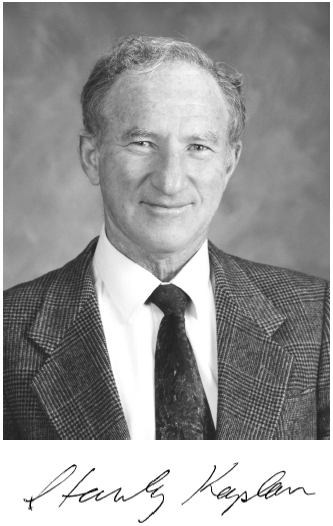
1931–2011
Elected in 1999
“For providing the framework of a general theory of quantitative risk assessment and development of synthesis methods in reactor physics.”
BY B. JOHN GARRICK
STANLEY KAPLAN, a leading contributor to the risk sciences and nuclear reactor physics, died on June 6, 2011, at the age of 79. His work and impact crossed many boundaries—private and public sector, science and engineering, theory and practice, and academia and industry—and improved risk assessment practices in nuclear power; space; the transport and handling of hazardous materials; plant operations; transportation systems; pipeline construction; fuels processing, fabrication, storage, and handling; and aircraft impact.
Born and raised in Brooklyn, New York, Stan showed strong intellectual leanings toward the sciences and technology at a very early age, and pursued these in his engineering and mathematical studies at the City College of New York. He graduated in 1951 with a degree in civil engineering and his outstanding performance won him a fellowship/scholarship to the prestigious graduate program in nuclear science and engineering at the Oak Ridge School of Reactor Technology (ORSORT) at the Oak Ridge National Laboratory. ORSORT was established by the US government after World War II to train especially talented scientists and engineers to practice nuclear science and engineering for peaceful applications of atomic energy. Because most of the education material was still classified “secret” such training was not practical at
universities until later; ORSORT was a means for gifted US scientists and engineers to get the jump on this emerging technology.
Stan then accepted a position with the Westinghouse Bettis Atomic Power Laboratory and simultaneously was given a grant to continue his graduate studies at the University of Pittsburgh, where he received an MS and PhD in mechanical engineering and applied mathematics. At Bettis he contributed significantly to the US Naval Nuclear Propulsion Program by analyzing the xenon spatial instability problem, using methods he developed based on reactor space-time kinetics, and by developing the Kaplan synthesis methods in reactor physics.
He went on to occupy key positions in other company settings, among them PLG, Inc., a consulting engineering and science firm in the Los Angeles area, where he was vice president and technical director. He was also founder and board chair of Bayesian Systems Inc., a Washington, DC–based company that develops and markets software for decision making in the face of risk and uncertainty.
Stan’s interests and skills found their way into many different applications, such as the health and risk sciences. He developed computational methods for determining the size and location of tumors, analytical methods for quantifying the risk of complex systems, and cost and risk models of very large and complex engineering projects. These achievements established him as a thought leader in several fields, and his ideas and methods are now widely used in the international risk and reliability community and in regulatory agencies worldwide.
An example of Stan’s ability to cross important boundaries was his role in bringing the quantitative risk assessment thought process to the US Department of Agriculture for use in regulatory decision making about food safety and agricultural imports. He was one of the first American scientists to take an interest in and actively contribute to TRIZ, the Russian Theory of Inventive Problem Solving, and especially its subset, Anticipatory Failure Determination, and transform
the methods for use in the risk sciences. Among his specific analytical contributions to risk assessment were the discrete probability distribution method for probabilistic calculations, the two-stage Bayesian technique for data analysis, the matrix theory for event tree computations, and a component of the software package RISKMAN® widely used for interactive risk analysis.
Stan had a passion for clarity of thought. Under one of his specialties, “the science of uncertainty,” he included risk, reliability, decision analysis, probability, and logical inference. He emphasized the quantitative, “evidence-based” approach to these subjects with Bayes’ theorem as his point of departure to develop the language of probability curves and “let the evidence speak.” He used this approach to bring about clarity, communication, decision, and action where there was confusion, conflict, waste, delay, and litigation.
In addition to his election to the National Academy of Engineering in 1999, Dr. Kaplan was a fellow of the Society for Risk Analysis and recipient of its highest honor, the Distinguished Achievement Award.
The Stan Kaplan legacy is forever imprinted on the process of probabilistic evidential and inferential thinking, the cornerstone of quantitative risk assessment, and he is sorely missed.
He is survived by his wife Joanne Damours, daughters Deborah, Jinnae, and Susan, and sons Steven and Alan.




